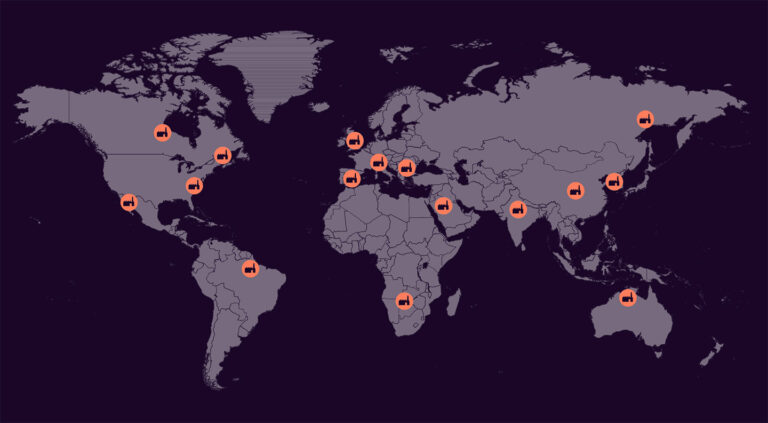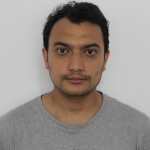
The Covid-19 pandemic is not an individual problem. It is not a societal, or a national problem. It is a global problem, hence requires a global effort to control the problem.
Originating in the Chinese city of Wuhan in December, 2019, a novel coronavirus today has spread to 188 countries and territories with 31.2 million confirmed cases (as of 24th Sept, 2020). It was declared a pandemic by the World Health Organisation on 11 March, 2020.
The virus, known to be transmitted through infected people to others who are in close contact through respiratory droplets, by direct contact with infected persons, or by contact with contaminated objects and surfaces has brought the world to screeching halt – national borders, cities, and even localities have been closed to prevent the spread of the disease. Economies have been severely affected as thousands of businesses have been shuttered, and mental health issues has escalated across the globe.
It has become important to control the pandemic – and scientists are racing to develop a safe and effective vaccination.
At an early stage during this pandemic, it quickly became apparent that to end this global crisis we don’t just need COVID-19 vaccines, we also need to ensure that everyone in the world has access to them. This triggered global leaders to call for a solution that would accelerate the development and manufacture of COVID-19 vaccines, as well as diagnostics and treatments, and guarantee rapid, fair and equitable access to them for people in all countries.
Today the world has that solution – COVAX. The result of an extraordinary and unique global collaboration, with 170 countries and economies now involved – collectively representing 70 per cent of the global population – COVAX has the world’s largest and most diverse portfolio of COVID-19 vaccines, and as such represents the world’s best hope of bringing the acute phase of this pandemic to a swift end.
WHAT IS COVAX?
According to GAVI, “COVAX is one of three pillars of the Access to COVID-19 Tools (ACT) Accelerator, which was launched in April by the World Health Organization (WHO), the European Commission and France in response to this pandemic. Bringing together governments, global health organisations, manufacturers, scientists, private sector, civil society and philanthropy, with the aim of providing innovative and equitable access to COVID-19 diagnostics, treatments and vaccines. The COVAX pillar is focussed on the latter. It is the only truly global solution to this pandemic because it is the only effort to ensure that people in all corners of the world will get access to COVID-19 vaccines once they are available, regardless of their wealth.”
Coordinated by Gavi, the Vaccine Alliance, the Coalition for Epidemic Preparedness Innovations (CEPI) and the WHO, COVAX will achieve this by acting as a platform that will support the research, development and manufacturing of a wide range of COVID-19 vaccine candidates, and negotiate their pricing. All participating countries, regardless of income levels, will have equal access to these vaccines once they are developed. The initial aim is to have 2 billion doses available by the end of 2021, which should be enough to protect high risk and vulnerable people, as well as frontline healthcare workers.
For lower-income funded nations, who would otherwise be unable to afford these vaccines, as well as a number of higher-income self-financing countries that have no bilateral deals with manufacturers, COVAX is quite literally a lifeline and the only viable way in which their citizens will get access to COVID-19 vaccines. For the wealthiest self-financing countries, some of which may also be negotiating bilateral deals with vaccine manufacturers, it serves as an invaluable insurance policy to protect their citizens, both directly and indirectly. On the one hand it will provide direct protection by increasing their chances of securing vaccine doses. Yet, at the same time by procuring COVID-19 vaccines through COVAX, these nations will also indirectly protect their citizens by reducing the chances of resurgence by ensuring that the rest of the world gets access to doses too.
WHY WE NEED COVAX
COVAX is necessary because without it there is a very real risk that the majority of people in the world will go unprotected against SARS-CoV-2, and this would allow the virus and its impact to continue unabated. COVAX has been created to maximise our chances of successfully developing COVID-19 vaccines and manufacture them in the quantities needed to end this crisis, and in doing so ensure that ability to pay does not become a barrier to accessing them.
To do this, first we need COVID-19 vaccines that are both safe and effective, which is by no means a certainty. There are currently more than 170 candidate vaccines in development, but the vast majority of these efforts are likely to fail. Based on previous vaccine development, those at the preclinical trial stage have roughly a 7% chance of succeeding, while the ones that make it to clinical trials have about a 20% chance. To increase the chances of success, COVAX has created the world’s largest and most diverse portfolio of these vaccines, with nine candidate vaccines already in development and a further nine under evaluation.
HOW WILL VACCINE DOSES BE ALLOCATED?
Once any of the COVAX portfolio vaccines have successfully undergone clinical trials and proved themselves to be both safe and effective, and have received regulatory approval, available doses will be allocated to all participating countries at the same rate, proportional to their total population size. A small buffer of about 5% of the total number of available doses will be kept aside to build a stockpile to help with acute outbreaks and to support humanitarian organisations, for example to vaccinate refugees who may not otherwise have access.
Even though self-financing participants can request for enough doses to vaccinate between 10-50% of their population, no country will receive enough doses to vaccinate more than 20% of its population until all countries in the financing group have been offered this amount. The only exception is those countries who have opted to receive fewer than 20%.
The full list of CEPI-supported candidate vaccines is as follows:
- Inovio, United States of America (Phase I/II)
- Moderna, United States of America (Phase III)
- CureVac, Germany (Phase I)
- Institut Pasteur/Merck/Themis, France/ United States of America /Austria (Preclinical)
- AstraZeneca/University of Oxford, United Kingdom of Great Britain and Northern Ireland (Phase III)
- University of Hong Kong, China (Preclinical)
- Novavax, United States of America (Phase I/II)
- Clover Biopharmaceuticals, China (Phase I)
- University of Queensland/CSL, Australia (Phase I)
The nine candidate vaccines that are currently being evaluated for inclusion in the COVAX Facility include two from China, two from the United States of America, one from Republic of Korea, one from the United Kingdom of Great Britain and Northern Ireland and one global, multi-manufacture partnership. Two of these are in Phase I trials, two are tech transfers and the remainder are at the discovery stage.






